#Contributions of React Native Developers
Explore tagged Tumblr posts
Text
Why React Native Developers Are Key to High-Performance Mobile Apps
React Native developers are crucial in developing high-performance mobile apps. They manage key technical tasks such as coding, debugging, and performance testing, ensuring apps run smoothly and efficiently. Their role includes optimizing user interfaces and improving app speed and responsiveness.
This blog explores the vital contributions of React Native developers and how their expertise leads to top-tier mobile applications that offer exceptional user experiences.
0 notes
Text
Good News - May 15-21
Like these weekly compilations? Support me on Ko-fi! Also, if you tip me on Ko-fi, at the end of the month I'll send you a link to all of the articles I found but didn't use each week - almost double the content!
1. Translocation of 2,000 rhinos in Africa gets underway in “one of the most audacious conservation efforts of modern times”

“The 2,000 rhinos - more than are currently found in any single wild location in Africa - represent around 12-15% of the continent’s remaining white rhino population. […] “Rhinos perform an important ecological function in the environment as a large grazing herbivore,” says Dale Wepener[….] “The protection of rhino is far more than just looking after rhino; other species that occur in the protected areas will benefit from the protection,” explains Jooste. “This will lead to an increase in diversity and result in much healthier ecosystems.”
2. Florida Corridor Buffers Effects of Climate Change on Wildlife — And People

“A massive multi-partner effort that has conserved 10 million acres for wildlife in Florida over past decades will help buffer wildlife—and people—from the effects of climate change, a new report says. […] Protecting these corridors is important for wildlife genetics, demography and connectivity […], conducting prescribed fires in the corridor can reduce the risk of more intense wildfires [… and] they can provide buffers against hurricanes and seasonal thunderstorms.”
3. Global life expectancy to increase by nearly 5 years by 2050 despite geopolitical, metabolic, and environmental threats
“Increases are expected to be largest in countries where life expectancy is lower, contributing to a convergence of increased life expectancy across geographies. The trend is largely driven by public health measures that have prevented and improved survival rates from cardiovascular diseases, COVID-19, and a range of communicable, maternal, neonatal, and nutritional diseases (CMNNs).”
4. Valencia has Spain’s longest urban park

“Jardin del Turia (Turia Garden) is the green spine of the City of Valencia and Spain’s (and possibly Europe’s) longest urban park stretching for a length of 8.5 kilometres [… and] the current administration plans to make Jardin del Turia Europe’s largest city green space by extending it to the sea[….] Almost all Valencia residents (97 per cent) live within 300 metres of an urban green space. […] Jardin del Turia is a true urban oasis that provides exceptional thermal comfort, with a temperature difference of up to three degrees compared to other areas of the city.”
5. This Paint Could Clean Both Itself and the Air
“When an artificial ultraviolet light source shines on [photocatalytic] paint, the nanoparticles react with pollutants to make them break down—theoretically removing them from the nearby air and preventing a discoloring buildup. [… R]esearchers developed a new photocatalytic paint that they claim works using UV rays from ordinary sunlight, making its self-cleaning properties easier to activate. They’ve also shown that they can effectively produce this paint from recycled materials [including fallen leaves].”
6. Planting Seedlings for a Cooler Rockingham

“A dedicated group of volunteers recently planted over a thousand native seedlings in Lewington Reserve [… and] re-established canopy cover to areas of the reserve to create cooling shade for the local community and provide homes for native wildlife. […] Planting lots of trees and shrubs in urban areas can help create shade and cool cities, mitigating the impacts of climate change, contributing to biodiversity conservation and building greener, more resilient communities.”
7. Sydney’s first dedicated affordable housing for trans women designed to deliver ‘positive outcomes’

“Community housing provider and charity Common Equity NSW, […] which is for people on very low to moderate incomes, prides itself on creating inclusive living and promotes the independence and well-being of people and communities […, and] will deliver the first-of-its-kind social housing in a bid to provide a safe place to live for transgender women seeking an affordable home.”
8. Rewilding: How a herd of bison reintroduced to Romania is helping ‘supercharge’ carbon removal

“170 European Bison reintroduced to Romania’s Țarcu mountains could help capture and store the carbon released by up to 84,000 average US petrol cars each year. […] By grazing a 48 square kilometre area of grassland in a wider landscape of 300 kilometres squared, they helped to capture an additional 54,000 tonnes of carbon each year. That is around 10 times the amount that would be captured by the ecosystem without the bison.”
9. World’s biggest grids could be powered by renewables, with little or no storage

“[…] 100% renewable supply can then match the load by putting surplus electricity into two kinds of distributed storage worth that [an energy expert] says are worth buying anyway – ice-storage air-conditioning and smart bidirectional charging of electric cars, and recover that energy when needed, filling the last gaps with unobtrusively flexible demand.”
10. Supporting the Long-Term Survival of Copper River Salmon and Alaska Native Traditions

“With $4.3 million in NOAA funds, the Copper River Watershed Project and The Eyak Corporation will remove fish passage barriers, opening more streams for salmon spawning and subsistence fishing. [… As part of this effort, o]ld narrow culverts that constrict water flow will be replaced with “stream simulation” culverts wide enough to fit the full stream, including its banks. They are also deep to allow contractors to place stones and other material inside to mimic a natural stream bottom.”
May 8-14 news here | (all credit for images and written material can be found at the source linked; I don’t claim credit for anything but curating.)
#hopepunk#good news#rhino#white rhino#africa#conservation#rewilding#climate change#florida#wildlife#life expectancy#health#spain#green space#urban parks#recycling#trees#global warming#trans#affordable housing#australia#bison#romania#carbon#carbon capture#renewableenergy#reforestation#salmon#alaska native#nature
393 notes
·
View notes
Text


more jekyll & hyde alien drawings :)
assorted lore dump below the cut:
Jekylls and Hydes adapted their split forms to fill two important evolutionary niches: community, and survival. Jekylls intentionally have duller, safer appearances, and exist to signal friendliness and create social bonds. Hydes, on the other hand, have weapons built into every aspect of their form, and are adapted for fighting, fleeing, and thriving.
Hydes are shorter because some of their mass goes to creating their wings and tail. As they transform and lose height, this also splits their horns apart.
They do not have a concept of gender, instead assigning pronouns to form in their native languages (usually).
They do, however, have a subsection of the species that can carry children (~25%) and a subsection that can contribute genetic data to the childbearer (~75%).
Multiple parents can contribute DNA to any given childbearer, similar to earthen cats, except the DNA is considered for the same child instead of a litter.
They also have no concept of sexuality. Individuals may show a preference for pairing with members of the species that can or cannot give birth, but it’s fairly rare.
Their birthing process is pretty similar to humans, with only a single child (usually) incubated within a parent’s womb for a while. There is a failsafe membrane around said womb during pregnancy that ensures form switching is not hard on the fetus.
Jekylls and Hydes do not usually form monogamous partnerships the way humans do. Jekylls, especially those who have birthed children, will usually form a small group of respectable friends who will all help parent the child. Hydes, or at least those who indulge in them enough, may find sexual partners whom they repeatedly meet up with over other, random encounters.
A child is always born in their Jekyll form, developing their Hyde form only in adolescence (human age equivalent of 10-12). Their horns begin growing in around early adolescence. They begin as two harmless nubs that over time, fuse into the full halo. The moment their halo forms coincides with the development of their Hyde side, and only when individuals transform for the first time does their horns sharpen from splitting apart.
This milestone in one’s life is colloquially referred to as their "split."
Younger members of the species are the least adept at controlling the transformations, as they are often emotion triggered. It takes quite a few years (essentially, after an individual has gone through puberty) for one to fully control it.
Despite not technically being connected to morality, Jekylls are often viewed as the more respectable, civilized side, and Hydes as the evil, animalistic side. Much of society considers swapping into Hyde form an indulgence, if not an outright sin.
Groups of Jekylls will even react in disgust to another’s Hyde, despite all having one themselves.
Part of the reason Jekylls are seen as such is because they are sort of the “default” form of the species, with their Hyde forms only becoming prominent in adolescence (despite the emotions associated with their Hyde mentalities existing within them from birth).
Counterculture that takes pride in embracing their Hyde side exists as well, and you can find Hyde specific bars and clubs in the slummier parts of town.
Particularly for social events, Jekylls will wear elegant gloves, and it's considered impolite or inconsiderate for them to not. This is because the transformation into their Hyde will rip through the gloves as their hands are bigger and clawed, so wearing gloves signals a Jekyll’s intention to remain in their more social form.
One can easily identify whether an individual is currently a Hyde or a Jekyll, due to their vastly different appearances, but it is incredibly hard to connect an individual Jekyll to their Hyde, or vice-versa. This has given Hydes a sense of anonymity that they often choose to abuse.
It is common for Hydes to use pseudonyms while in their form, taking advantage of the anonymity.
If a transformation is to be forced, there is a transformation "potion" that can be administered to an individual to trigger a transformation between forms chemically. These are used in court cases, to treat medical conditions, as a black market drug, or, in extreme scenarios, as a form of torture.
Their bodies will almost always transform into Hyde upon death. This is because of the adrenaline spike and survival instinct that is triggered when dying. Because of this, most funeral rites involve burning the bodies or at the very least covering them up.
#art#oc#the final human#jekyll and hyde#alien design#their lack of gender/sexuality is based on the way the book is oops all male bachelors in their 50s btw
36 notes
·
View notes
Text
How to Build Software Projects for Beginners

Building software projects is one of the best ways to learn programming and gain practical experience. Whether you want to enhance your resume or simply enjoy coding, starting your own project can be incredibly rewarding. Here’s a step-by-step guide to help you get started.
1. Choose Your Project Idea
Select a project that interests you and is appropriate for your skill level. Here are some ideas:
To-do list application
Personal blog or portfolio website
Weather app using a public API
Simple game (like Tic-Tac-Toe)
2. Define the Scope
Outline what features you want in your project. Start small and focus on the minimum viable product (MVP) — the simplest version of your idea that is still functional. You can always add more features later!
3. Choose the Right Tools and Technologies
Based on your project, choose the appropriate programming languages, frameworks, and tools:
Web Development: HTML, CSS, JavaScript, React, or Django
Mobile Development: Flutter, React Native, or native languages (Java/Kotlin for Android, Swift for iOS)
Game Development: Unity (C#), Godot (GDScript), or Pygame (Python)
4. Set Up Your Development Environment
Install the necessary software and tools:
Code editor (e.g., Visual Studio Code, Atom, or Sublime Text)
Version control (e.g., Git and GitHub for collaboration and backup)
Frameworks and libraries (install via package managers like npm, pip, or gems)
5. Break Down the Project into Tasks
Divide your project into smaller, manageable tasks. Create a to-do list or use project management tools like Trello or Asana to keep track of your progress.
6. Start Coding!
Begin with the core functionality of your project. Don’t worry about perfection at this stage. Focus on getting your code to work, and remember to:
Write clean, readable code
Test your code frequently
Commit your changes regularly using Git
7. Test and Debug
Once you have a working version, thoroughly test it. Look for bugs and fix any issues you encounter. Testing ensures your software functions correctly and provides a better user experience.
8. Seek Feedback
Share your project with friends, family, or online communities. Feedback can provide valuable insights and suggestions for improvement. Consider platforms like GitHub to showcase your work and get input from other developers.
9. Iterate and Improve
Based on feedback, make improvements and add new features. Software development is an iterative process, so don’t hesitate to refine your project continuously.
10. Document Your Work
Write documentation for your project. Include instructions on how to set it up, use it, and contribute. Good documentation helps others understand your project and can attract potential collaborators.
Conclusion
Building software projects is a fantastic way to learn and grow as a developer. Follow these steps, stay persistent, and enjoy the process. Remember, every project is a learning experience that will enhance your skills and confidence!
3 notes
·
View notes
Text
Phoenix App Development: Trends, Challenges, and the Future of Local Tech
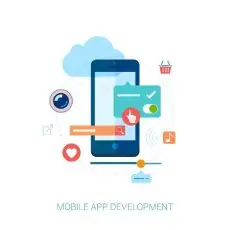
The Arizona sun isn't just hot – it's also a breeding ground for innovation. Phoenix, Arizona, has emerged as a major hub for mobile app development, attracting businesses and entrepreneurs seeking to tap into a vibrant tech ecosystem. At Net-Craft.com, a leading Phoenix app development company located in Scottsdale, we've witnessed this growth firsthand.
This article dives into the exciting world of Phoenix app development, exploring the latest trends, the challenges developers face, and a glimpse into the future of local tech.
Phoenix App Development Trends: Soaring High
Phoenix's mobile app development scene is experiencing a surge, fueled by several key trends:
Focus on User Experience (UX): Modern users demand intuitive, user-friendly apps. Phoenix app developers are prioritizing clean interfaces, seamless navigation, and personalized experiences to keep users engaged.
Emerging Technologies: Cutting-edge technologies like Artificial Intelligence (AI), Augmented Reality (AR), and Virtual Reality (VR) are making their mark. Phoenix software development companies are incorporating these elements to create innovative and interactive apps.
The Rise of On-Demand Services: From food delivery to transportation, on-demand services are booming. Phoenix app developers are crafting solutions that cater to this growing need, offering convenience and flexibility to users.
Cross-Platform Development: Reaching a wider audience is crucial. Phoenix mobile app developers are increasingly adopting cross-platform frameworks like React Native or Flutter to create apps that function seamlessly across iOS and Android devices.
Security at the Forefront: Data security is paramount. Phoenix app developers are prioritizing robust security measures to protect user information and ensure app safety.
These trends highlight the dynamic nature of Phoenix app development. By staying ahead of the curve and embracing these advancements, developers can create apps that stand out in a crowded marketplace.
Challenges for Phoenix App Developers: Navigating the Landscape
While promising, the Phoenix app development landscape presents its own set of challenges:
Talent Acquisition: Highly skilled developers, designers, and user experience specialists are in high demand. Phoenix app development companies need to implement competitive hiring strategies to attract and retain top talent.
Project Management: Keeping complex projects on track and within budget requires meticulous planning and execution. Phoenix software development companies need to utilize efficient project management methodologies like Agile to ensure smooth development processes.
App Store Optimization (ASO): Standing out in app stores is a constant battle. Phoenix app developers need to employ effective ASO strategies like keyword optimization and compelling app descriptions to increase discoverability.
Maintaining App Engagement: User retention is critical. To keep users coming back, Phoenix mobile app developers need to implement strategies like push notifications, in-app rewards, and continuous improvement based on user feedback.
Overcoming these challenges requires a commitment to continuous learning, collaboration, and a customer-centric approach. Phoenix app development companies must adapt their strategies to stay competitive and deliver successful mobile app solutions.
The Future of Local Tech: Phoenix Takes Flight
The outlook for Phoenix's tech future is bright. Several factors contribute to this promising forecast:
Growing Startup Ecosystem: Arizona boasts a thriving startup scene. Phoenix, as a major hub, attracts angel investors and venture capital, providing funding opportunities for innovative app ideas.
Educational Institutions: Universities like Arizona State University and the University of Arizona are producing a highly skilled technical workforce, fueling the Phoenix app development scene.
Government Support: Government initiatives and tax breaks are fostering a supportive environment for tech companies to flourish.
Focus on Diversity: Phoenix is actively promoting diversity within the tech industry. This inclusivity fosters innovation and attracts talent from diverse backgrounds.
These factors position Phoenix as a key player in the national tech landscape. With continued growth and collaboration, Phoenix app development has the potential to take flight and reach even greater heights.
Why Choose Phoenix App Development?
With its innovative spirit, skilled talent pool, and a supportive tech ecosystem, Phoenix offers a compelling proposition for businesses looking to develop mobile apps. Here's why choosing a Phoenix app development company like Net-Craft.com can benefit you:
Local Expertise: We understand the specific needs and trends of the Phoenix market, ensuring your app caters to the local audience.
Agile Development: We follow a flexible approach, allowing you to adapt your app based on user feedback and market demands.
Focus on User Experience: We prioritize user experience, creating apps that are intuitive, engaging, and effective.
Cost-Effectiveness: We offer competitive rates without compromising on quality, making app development accessible to businesses of all sizes.
By partnering with a local Phoenix app development company, you can leverage the expertise and resources available within this vibrant tech hub.
Embrace the Phoenix Advantage
The Phoenix app development scene is soaring. By leveraging the expertise of local developers, embracing emerging technologies, and prioritizing user experience, you can create mobile apps that drive business growth and leave a lasting impact.
Net-Craft.com: Your Partner in Phoenix App Development
At Net-Craft.com, we're passionate about turning your app ideas into reality. Our team of experienced developers is committed to delivering cutting-edge solutions that meet the highest standards of quality and innovation.
Contact us today to discuss your app development project and let's build something amazing together!
Know more https://www.net-craft.com/blog/2024/12/08/phoenix-app-development-trends-challenges-future/
#phoenix app development#mobile app development phoenix#phoenix app developers#phoenix software development#phoenix mobile app development
2 notes
·
View notes
Note
not otome isekai but theres this manhwa that i read, return of the 8th class magician or something like that, mc served a prince who became emperor in his first life doing atrocities in that princes name and leaves after the prince becomes emperor to "atone for his sins" but the prince-turned-emperor murders him bc hes afraid of ian's (thats the mc name) power and ian time travels.
first of all the way the manhwa includes and caricaturizes native americans is awful. theyre turned into these... black magic wielding dark shamans who collude w demons and some shit, mc walks up and takes the staff their chieftain uses after storming the place and killing him.
second of all the main character is just... bad. flat. boring. man went back in time to "atone for his sins" bc he regrets all the bloodshed and murder but on the first night upon his return he kills a man and goes "ah kindness alone cant protect anything" like bro? the man did try to assault ians mother but both she and ian are leaving that town anyways and forever out of that guys reach, who tf is he protecting by killing him?
third of all theres no depth to the side cast. characters are introduced and dont get to matter. their "development" and plotlines get introduced, dont come up again, and then suddenly get "resolved". theres a plotline about looking for a specific herb to cure a character the mc took into his family so to speak, and the search... never features on screen.
fourth of all the female characters are dogshit. theres like three, one is ians mom who is just there to be mom(TM), theres a female magician whose name i dont remember that got introduced as a cocky powerful magician only to get her ass whooped by a 12yo ian. theres the princess who was forced to hide her magical abilities by her father the emperor and yet nothing is done with her she contributes nothing to the plot the politics the magical threat only to get married off to the mc. awful. also the spelling of her name keeps changing so i cant tell what it is. my current best guess is hayley.
there are many other sins this manhwa commits such as a dogshit chosen-one mc-is-the-only-one-who-does-anything-at-all and the-emperor-is-a-terrible-parent-but-the-narrative-doesnt-acknowledge-it shaped crimes but god have mercy this manhwa is terrible.
id like to hear anyone react to it just so i can derive some entertainment from this.
This sounds like it'd be on par with those weird ass fantasy fufilment that were popular in 2013 for being power fantasies for men.
If I can find it, I'll read it for a post.
2 notes
·
View notes
Text
Top Internship Opportunities Students Might Be Missing Out On
In the bustling city of Ahmedabad, amidst the scorching summer heat, lies a golden opportunity for IT aspirants to elevate their skills and gain hands-on experience in the ever-evolving realm of technology. The Special Character (TSC), with its innovative approach to internships, unveils a unique Summer Internship Program for 2024, promising a transformative experience for participants.
At the core of this program lies the essence of real-world application development. Unlike conventional internships that often involve mundane tasks, TSC's internship immerses participants in real-world projects, providing them with a unique opportunity to explore the complexities of IoT, email marketing, e-commerce platforms, and advanced web development.
What makes this program unique is its focus on hands-on learning and practical experience. Over just one month, participants are immersed in a dynamic environment where they not only learn theoretical concepts but also apply them to real-world scenarios. This hands-on approach fosters a deeper understanding of the subject matter, equipping participants with practical skills that are highly sought after in the industry.

Why Choose a Live Project Internship?
Many traditional internships relegate students to administrative tasks or basic research. While these can be valuable, a live project internship like TSC's offers a new level of engagement. Here's why it stands out:
Real-World Application: Forget theoretical exercises. You'll be working on actual projects, gaining exposure to the challenges and workflows of the industry. This practical experience makes your skills more relevant and showcases your ability to contribute on day one.
Skill Development on Demand: Summer Internship 2024 focuses on in-demand technologies like HTML5, CSS3, JavaScript, and frameworks like React Native and Node.js. You'll not only learn the basics but also gain expertise, making you a more attractive candidate for future tech jobs.
Building a Portfolio: Live projects become part of your portfolio, providing concrete evidence of your skills and accomplishments. This tangible showcase is invaluable when applying for full-time positions after graduation.
Beyond Technical Skills: A Holistic Learning Experience
The Summer Internship in Ahmedabad goes beyond just coding. TSC understands the importance of well-rounded professionals. Here's what sets them apart:
Expert Mentorship: You'll be guided by an experienced mentor with extensive industry knowledge. This one-on-one support ensures you grasp concepts effectively and navigate project challenges with confidence.
Multilingual Learning Environment: Whether you're comfortable in English, Gujarati, or Hindi, TSC offers a supportive environment that caters to your learning style. This fosters inclusivity and allows you to focus on the content, not the language barrier.
Communication and Soft Skills Training: Technical skills are crucial, but communication and teamwork are equally important in the professional world. TSC provides complementary training in these areas, ensuring you can collaborate and present your ideas effectively.
The Competitive Advantage: Showcase Your Talent and Win!
Summer Internship 2024 adds a fun twist with a team competition element. Working collaboratively on live projects, you'll get to showcase your talent, problem-solving skills, and team spirit. The top three teams win exciting cash prizes, providing financial rewards and recognition for your hard work.
Bonus Perks and Career Opportunities
The benefits of this internship program extend beyond the core curriculum. Here are some additional perks:
Convenient Location: Located in the heart of Ahmedabad, the program offers easy access, minimizing commute time and maximizing your learning hours.
Free Training Sessions: TSC provides complimentary sessions on communication and aptitude, enhancing your overall professional skillset.
Fun and Supportive Environment: Enjoy a positive work environment with a supportive team and complimentary goodies to keep you energized throughout the program.
Potential Career Launchpad: Impress your mentors with your dedication and skills, and you might land a permanent position at TSC, kickstarting your career in no time!
Limited Spots Available: Secure Your Seat Today!
With a focus on live projects, expert guidance, and a chance to win big, the Summer Internship in Ahmedabad offered by The Special Character is a unique opportunity for IT aspirants. Don't miss out on this chance to gain valuable skills, build a strong portfolio, and potentially secure your future in the ever-evolving tech industry.
Remember, spots are limited! Visit their website to register and secure your seat for a summer of learning, growth, and exciting possibilities.
Note: This blog post is informative and does not contain any promotional language for The Special Character.
#The Special Character#TSC#Web development#Software development#app development#mobile apps#software development#Web dev#devops#Internship#summer internships
2 notes
·
View notes
Text
Cross-Platform App Development In Dubai - An Insightful Guide To Follow
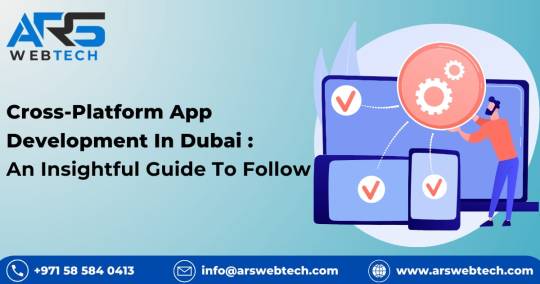
In the heart of the United Arab Emirates, the dynamic world of mobile app development is evolving rapidly, and Dubai is at its forefront. This guide delves into the world of cross-platform app development, highlighting its essentials and showcasing leading mobile app development firms in the UAE, like ARS Webtech.
An Insightful Overview About Cross-Platform App Development
Cross-platform app development involves creating mobile applications that run on multiple platforms using a single codebase. This approach contrasts with traditional native app development, which requires writing separate code for each platform, such as Java or Kotlin for Android and Swift or Objective-C for iOS.
Benefits of Cross-Platform App Development By Mobile App Development Companies UAE
Code Reusability: Developers can write and manage code that works across various platforms, reducing development time and effort.
Cost and Time Efficiency: Faster and more economical than developing individual native apps, it simplifies the entire development cycle.
Wider Market Reach: A single app can target different platforms, expanding market reach.
Consistent User Experience: Cross-platform frameworks support maintaining a consistent experience across platforms.
Faster Deployment and Updates: Facilitates simultaneous feature release across all platforms.
Popular Cross-Platform Development Frameworks
Flutter: Known for creating visually appealing apps, it's a strong choice for businesses in Dubai.
React Native: Supported by Facebook, it allows developers to build mobile apps using React and JavaScript, known for its flexibility and seamless integration.
Best Practices In Cross-Platform App Development
Prioritize User Experience: Ensuring apps function flawlessly with an intuitive interface is crucial.
Security Considerations: Especially important in sectors like healthcare and e-commerce, robust security measures are essential.
Scalability: The app should accommodate increased user traffic and additional features as the business grows.
Regular Updates and Maintenance: Ensuring the app remains compatible with the latest operating systems and user expectations.
Integration of Emerging Technologies: Incorporating AI, IoT, 5G connectivity, and machine learning enhances user experiences and contributes to Dubai's smart city initiatives.
Blockchain for Increased Security: Integrating blockchain technologies can add an extra layer of security, particularly in sensitive industries.
Conclusion
Cross-platform app development is a strategic choice for businesses in Dubai looking to maximize their digital presence. Companies like ARS Webtech are at the forefront of this movement, driving innovation and excellence in the mobile app development scene.
FAQs
1. Which frameworks are commonly used for cross-platform app development in Dubai?
Flutter and React Native are two prominent frameworks. Flutter is known for its visually stunning apps, while React Native offers flexibility and seamless integration.
2. How do mobile app development companies in Dubai prioritize user experience in cross-platform apps?
User experience is a top priority, ensuring consistent and delightful interfaces across devices.
3. How to choose between Flutter and React Native?
The choice depends on specific project requirements, design preferences, development speed, and existing tech stacks.
For further guidance or to start your cross-platform app development journey, contact ARS Webtech at +971585840413.
#ios app development#mobile app company#mobile app developer company#android#digital marketing#mobile app#digital marketing agency#digital marketing company#digital marketing strategy#digital marketing services
2 notes
·
View notes
Text
App Development frameworks
How do the most popular app development frameworks contribute to mobile app development?
In today’s digital landscape, mobile applications (app development frameworks) have become a necessity for businesses to reach their target audience effectively. With the ever-growing demand for innovative and user-friendly mobile applications, developers are constantly seeking efficient ways to build high-quality applications in very little time. This is where mobile app development frameworks come into play. The frameworks provide a foundation for developers to create cross-platform mobile applications that work seamlessly across various devices and OSes.
Development Frameworks Used for Developing Mobile Applications
Most popular app development frameworks
React Native (developed by Facebook) — This framework has gained immense popularity among developers due to its ability to build native-like mobile apps using JavaScript. It allows them to write the codes once and deploy them on both Android and iOS platforms. Hire React Native developers to obtain cross-platform mobile app solutions for iOS, Android, and the web and enjoy benefits like reduced costs and time and enhanced productivity and profitability. app development frameworks
Flutter (backed by Google) — Flutter uses the Dart programming language and provides a rich set of customizable widgets, enabling developers to create visually appealing and responsive applications. Its hot reload feature helps the developers change the codes in real time and obtain immediate visual updates. If you opt to hire Flutter developers, your cross-platform applications will have a quicker time-to-market with a single codebase for all the platforms. app development frameworks
Ionic (open-source framework) — It uses technologies like HTML, CSS, and JavaScript in the development of cross-platform mobile applications. It enables developers to provide end users with a consistent user experience across multiple platforms. It will be a smart choice to hire Ionic developers when it comes to obtaining a feature-rich cross-platform mobile application. app development frameworks
Kotlin (open source, originated at JetBrains) — This is another app development framework that allows developers to share codes between Android and iOS platforms. It seamlessly works with Android Jetpacks (a tool provided by Google). Hire Kotlin developers to enjoy improved app performance and a better user experience with access to modern technologies. app development frameworks
Hire Experts
In today’s mobile-driven world, mobile app development has become a crucial aspect of achieving business success. Hiring the right mobile app developer is essential to obtaining a high-quality application. With various frameworks available, such as React Native, Flutter, Ionic, and Kotlin, selecting the ideal developer can be challenging. A skilled developer can help you cut down on the cost of application development. Correspondingly, it will lead to an increase in the ROI value. Hire the best developers from WEBSTEP Technologies. Visit https://www.webstep.in to obtain more information and connect with them to acquire a cutting-edge mobile solution for your business. app development frameworks
2 notes
·
View notes
Text
The Essential Role of React Native Developers: An Insightful Blog
Discover the key contributions of React Native developers in this blog. From writing efficient code and implementing features to testing and deploying mobile apps, their technical skills are essential for bringing innovative ideas to life.
Understand how they help startups create high-quality mobile applications in this blog.
0 notes
Text
Innovation: The Driving Force Behind Every Successful App Development Company in Bangalore
In today’s technology-first world, innovation has become the foundation of progress, especially in mobile app development. For any leading app development company in Bangalore, innovation is not just an added advantage—it is a business imperative. As India’s Silicon Valley, Bangalore fosters a highly competitive tech ecosystem, pushing companies to go beyond conventional practices and deliver transformative digital experiences.
Bangalore’s Competitive Edge and the Need for Innovation
Bangalore is home to an extraordinary concentration of startups, global tech firms, and IT service providers. This dense and fast-paced environment demands that companies consistently innovate or risk becoming irrelevant. In such a market, a mobile app development company cannot afford to offer just functional apps. Clients expect robust, user-friendly, and adaptive digital solutions that enhance their business outcomes.
Mobile applications today must be scalable, flexible, and packed with forward-looking features. Whether the client is from healthcare, retail, or finance, the emphasis is now on platforms that are not only functional but also future-ready. This has made innovation a non-negotiable quality for a successful app development company in Bangalore.
Innovation as a Continuous Process
Contrary to the perception that innovation is a one-off activity, it is in fact an ongoing commitment. A forward-thinking mobile application development company approaches innovation as a continuous cycle of ideation, implementation, feedback, and refinement. Agile development methodologies, combined with real-time collaboration tools, empower developers to evolve their apps rapidly in response to user needs and market shifts.
These companies invest heavily in R&D, explore emerging technologies such as blockchain, artificial intelligence, and augmented reality, and build cloud-native applications designed for high performance and security. This iterative, user-focused approach ensures apps are not just created—but continuously improved.
The User as the Center of Innovation
While advanced technology plays a critical role, true innovation often stems from understanding the end-user. A leading app development company places user experience at the heart of every project. This means creating mobile applications that are intuitive, responsive, and tailored to meet the users’ real-world needs.
Design elements such as fast loading times, clean navigation, and accessible interfaces contribute significantly to the overall success of the app. In Bangalore—where users are tech-savvy and expectations are high—apps must function seamlessly across a multitude of devices and platforms. A user-centered design philosophy ensures that the app not only attracts users but also retains them.
Staying Ahead of Technological Trends
The digital landscape is evolving rapidly, and staying ahead of trends is critical for long-term success. The best mobile app development company in Bangalore closely monitors global technology movements and adapts accordingly. Whether it's the rise of super apps, the integration of voice interfaces, or the growing demand for immersive AR features, early adoption gives companies a competitive edge.
Rather than reacting to changes, innovative companies lead the way by launching pilot projects, testing new ideas, and iterating based on market feedback. This positions them not just as developers, but as strategic partners in their clients’ digital transformation journey.
Long-Term Success Built on Innovation
Innovation is the distinguishing factor between good and great app development. For an app development company in Bangalore, it is the driving force behind business sustainability, client satisfaction, and market leadership. The city’s thriving tech ecosystem continues to push companies to challenge norms and redefine digital experiences.
As the digital economy expands, businesses will increasingly seek partners who can deliver meaningful innovation—not just technology. Companies that embrace change, anticipate user needs, and continuously innovate will not only lead the market—they will shape its future.
#mobileappdevelopmentcompaniesinbangalore#5inewebsolution#customappdevelopment#bestmobileappdevelopmentcompanyinbangalore#bangaloretech#flutterappdevelopment#mobileapplicationdevelopment#mobileappdevelopmentcompanyinbangalore#appdevelopmentbangalore#mobileappexpertsbangalore
0 notes
Text
How To Hire Mobile App Developers In The USA & Canada (2025 Guide)
Mobile App Developers

In 2025, a robust mobile presence isn't just an advantage – it's a necessity. From streamlining logistics to enhancing customer engagement, mobile apps are at the heart of digital transformation. But the secret sauce to a truly successful app? A highly skilled development team.
For businesses in North America, or those eyeing the vibrant North American market, hiring mobile app developers from the USA or Canada offers unparalleled benefits. However, navigating the hiring landscape requires a strategic approach. This guide will walk you through everything you need to know to secure top-tier talent in 2025.
Why North America? The Strategic Edge
Opting for developers in the USA or Canada isn't just a matter of proximity; it's a strategic decision that yields significant advantages:
Time Zone Compatibility: Say goodbye to frustrating delays and miscommunications. Working within similar time zones ensures seamless collaboration, real-time feedback, and quicker decision-making.
High Technical Standards: Developers in North America are renowned for their expertise in cutting-edge frameworks like Flutter, React Native, Kotlin, and Swift, alongside robust backend stacks like Node.js, Firebase, and Python. This translates into scalable, secure, and high-performing applications.
Stronger Legal Protections: Contracts governed by U.S. or Canadian law provide robust safeguards for your intellectual property, data privacy, and project confidentiality, offering peace of mind.
Clear Communication & Cultural Alignment: Beyond language fluency, North American teams often possess a deep understanding of Western consumer behavior and business etiquette. This cultural alignment is invaluable for crafting intuitive user experiences that resonate with your target audience.
Choosing Your Hiring Model for 2025

The right hiring model depends on your project's scope, budget, and long-term vision.
Freelancers:
Ideal for: Small projects, MVPs, or budget-conscious initiatives.
Pros: Cost-effective, fast hiring.
Cons: Less accountability, potential for delays or abandoned projects, typically no post-deployment support.
Where to find: Upwork, Freelancer, Toptal.
In-House Developers:
Ideal for: Companies seeking maximum control with a long-term product roadmap.
Pros: Direct control, easier daily collaboration.
Cons: Higher costs (salaries, benefits, infrastructure), lengthy hiring processes.
Agencies & Development Companies:
Ideal for: Businesses needing full-cycle development, from ideation to maintenance.
Pros: Access to experienced teams, clear contracts, end-to-end service.
Cons: Can be pricier for very small startups.
Dedicated Remote Teams (The Best of Both Worlds):
Ideal for: Those who want the flexibility of remote work with the stability of an agency.
Pros: Scalable, cost-effective, transparent workflows, consistent communication, and a dedicated focus on your project.
Where to Discover Top Talent in North America

Finding the right talent requires knowing where to look:
Clutch & GoodFirms: Reputable platforms for verified B2B agency reviews and portfolios.
LinkedIn & AngelList: Excellent for vetting individual developers or discovering tech startups.
GitHub & Stack Overflow: Explore public contributions and assess a developer's reputation and coding skills.
Google Search: Simple yet effective. Keywords like "hire app developers in Canada" or "USA mobile app development company" can yield trusted results.
Tech Directories: Explore industry-specific listings on platforms like BuiltIn, G2, and TopDevelopers.co.
Essential Skills to Prioritize
When evaluating potential candidates or agencies, look beyond basic coding abilities:
Platform Knowledge: Expertise in iOS (Swift, Objective-C), Android (Kotlin, Java), or cross-platform solutions (Flutter, React Native).
Design Integration: Ability to seamlessly work with UI/UX designers using tools like Figma or Adobe XD.
Backend & API: Experience with robust backend technologies such as Node.js, Firebase, GraphQL, and MongoDB.
Testing & QA: Proficiency in automated testing, CI/CD integration, and bug tracking.
Post-Launch Support: A commitment to ongoing updates, maintenance, and performance optimization.
Communication & Project Management: Familiarity with Agile methodologies, regular sprints, and collaboration tools like Slack, Jira, and Trello.
The Cost of Hiring Mobile App Developers in 2025

Understanding the financial commitment is crucial. Here's a general overview of expected costs in the USA and Canada:
Hiring Type
Estimated Cost (USD)
Freelancers
$40–$120/hour
In-House Developers
$100K–$180K/year (salary + benefits)
Development Agencies
$25K–$200K+/project
Dedicated Remote Team
$4,000–$10,000/month per developer
Key Questions to Ask Before You Hire
Thorough vetting is paramount. Arm yourself with these questions:
What mobile platforms and frameworks do you specialize in?
Do you have experience with projects in my industry (e.g., eCommerce, healthcare)?
Can you provide a portfolio of live apps or past projects?
What does your testing and QA process look like?
Who owns the source code once the project is complete?
How do you handle communication, project management, and reporting?
What kind of post-launch support and maintenance do you offer?
Safeguarding Your Project: Legal Considerations
Protecting your intellectual property and user data is non-negotiable:
NDAs (Non-Disclosure Agreements): Always sign these before sharing any sensitive ideas or proprietary information.
Contracts: Ensure your contract clearly defines deliverables, timelines, payment terms, and intellectual property ownership.
IP Ownership: The agreement must explicitly state that you retain full rights to the source code and all creative assets.
Compliance: For industries like healthcare, ensure HIPAA compliance. For any international user base, familiarity with GDPR and other data privacy regulations is crucial.
Industry-Specific Developer Needs
Different industries have unique requirements. When hiring, ensure your developers understand these nuances:
Ecommerce Apps: Real-time inventory syncing, secure payment gateways, push notifications for promotions.
Healthcare Apps: HIPAA compliance, telemedicine integration, medical data encryption.
Real Estate Apps: MLS/IDX integrations, geo-fencing, map APIs, virtual property tours.
Education Apps: User progress tracking, AI tutors, adaptive learning algorithms.
Logistics & Delivery Apps: Route optimization, real-time tracking, fleet management dashboards.
CQLsys Technologies — Your Trusted Partner in Mobile App Development
At CQLsys Technologies, we understand the complexities of modern mobile app development. With a proven track record of delivering cutting-edge mobile applications across diverse sectors, we are your ideal partner.
Why Choose Us?
Global Reach: Offices in India & Canada provide comprehensive global coverage.
Extensive Experience: Over 12 years in the industry.
Proven Success: 4,500+ successful projects delivered.
Cutting-Edge Expertise: Proficient in Flutter, AI apps, PWAs, and enterprise mobility solutions.
Agile Project Management: End-to-end project management with transparent Agile sprints.
Client Success Story: We helped a logistics startup in Toronto reduce delivery delays by 70% by developing a real-time, AI-powered mobile solution that optimized their entire delivery process.
Your Step-by-Step Hiring Journey
Define Your Project Scope: Clearly outline features, target platforms (iOS, Android), and overall goals.
Select a Hiring Model: Choose the approach that best fits your needs: freelance, in-house, dedicated team, or agency.
Create a Shortlist: Utilize platforms like Clutch, GoodFirms, LinkedIn, and targeted Google searches.
Interview Candidates: Evaluate technical skills, ask project-specific questions, and assess communication.
Request Proposals: Review detailed project timelines, cost breakdowns, and proposed tech stacks.
Sign Contracts & NDAs: Ensure all legal agreements clearly define milestones, payment terms, and IP ownership.
Kick Off the Project: Leverage collaboration tools like Jira, Trello, and Slack for seamless teamwork.
Test & Launch: Conduct rigorous QA testing, manage beta releases, and optimize for app store visibility.
Post-Launch Support: Establish a plan for ongoing monitoring, bug fixes, and future updates.
Conclusion
Hiring mobile app developers in the USA and Canada in 2025 is more than just sourcing technical skill; it's about finding a trusted partner who truly understands your market, your business goals, and your target users. Whether you're embarking on a brand-new app venture or looking to scale an existing one, making the right hiring choice is fundamental to ensuring long-term success and digital growth.
Before You Hire, Use This Final Checklist:
✅ Have you clearly defined your app features and goals?
✅ Have you thoroughly shortlisted candidates or agencies?
✅ Are you clear on your preferred hiring model and budget?
✅ Do you have robust NDA and contract templates in place?
✅ Have you discussed and secured commitments for post-launch support?
Ready to bring your mobile app vision to life? 📞 Book a free consultation with CQLsys Technologies — your trusted mobile app development partner in Canada and the USA.
#app development#mobile app development software#app development software#best app development companies#mobile app development#mobile development#flutter app development#app development agency#app development company#android app development software#ios app development#app making company#mobile app development company#android application development#best app developers#app development service#android app development#cross platform app development#web app development#website and app development
0 notes
Text
Hiring Remote Developers for Startups: Mistakes Founders Make in 2025
Introduction

The developer looked perfect on paper. But three weeks later, your sprint backlog hasn’t moved. Somewhere between onboarding and output, momentum breaks. This is the silent failure many founders face when hiring remote developers for startups!
Remote hiring isn’t broken, it’s misunderstood. Founders treat it like a shortcut. In reality, it’s a system that demands planning, structure, and smart evaluation. This blog unpacks the most common remote developer hiring mistakes. You’ll see where startups go wrong, what to watch for, and how to course-correct before it costs time or trust!
Why Startups Prefer Remote Developers in 2025?
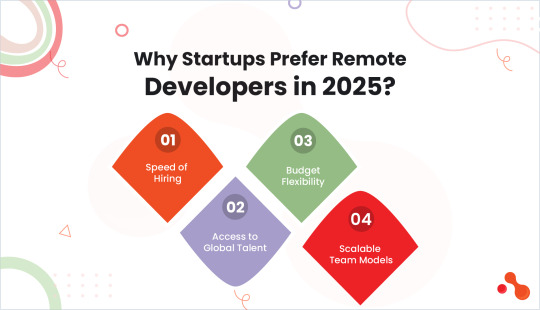
Startups today face constant pressure to ship fast, build lean, and adapt on demand. That’s why many are hiring remote developers as their default development model.
Speed of Hiring
Traditional hiring takes months, whereas remote hiring through vetted platforms or partners can take days, only days. Startups need product velocity, but not recruitment delays!
Access to Global Talent
Founders are no longer limited to local talent pools. Remote hiring unlocks developers across regions, time zones, and tech stacks. This helps startups match niche skills like DevOps, API design, or React Native, on demand.
Budget Flexibility
Hiring full-time employees includes salaries, equity, and overhead. Remote hiring lets founders control burn rate with flexible contracts, hourly billing, or part-time capacity. This matters most in early-stage builds, where every dollar must contribute to product delivery.
Scalable Team Models
Remote developers fit into scalable engagement models. These models give founders flexibility to expand or reduce capacity as product needs change.
Startups can use:
Staff augmentation for short-term needs
Dedicated developer models for long-term build cycles
Hybrid setups of outsource remote developers and in-house team to balance leadership with outsourced execution
Common Mistakes Founders Make For Remote Hiring
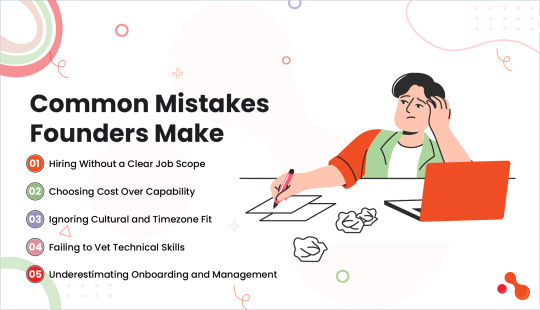
Startup founders often dive into hiring remote developers without a strong hiring strategy. The urgency to build fast sometimes overrides the need for structured evaluation, onboarding, and collaboration planning.
Here are the most common mistakes and how they hurt your product velocity and code quality
Hiring Without a Clear Job Scope
Many founders post generic job briefs like “Need a backend developer for MVP.” This lack of detail results in mismatched hires who either underdeliver or waste cycles asking basic questions. Without clear responsibilities, timelines, and technical requirements, developers can’t align their output with sprint goals.
Tip: Always write a job scope that defines the project stage, stack, tech challenges, and what success looks like after 30, 60, and 90 days.
Choosing Cost Over Capability
It’s tempting to hire the cheapest developer to save early-stage cash. But low hourly rates often come with slower output, incomplete documentation, and messy code that needs refactoring later.
In 2025, realistic hourly ranges look like this:
Mid-level developer (India, Philippines): $15–$25/hr
Senior backend developer (Eastern Europe): $30–$60/hr
Specialists (DevOps, AI, Security): $50–$90/hr
Paying more for developers who deliver right the first time protects your runway and reputation. That's why hiring remote developers with expertise becomes important!
Ignoring Cultural and Timezone Fit
Founders often overlook timezone overlap and communication habits when building remote teams. But when developers work on opposite hours, daily standups fail, questions pile up, and blockers stay unresolved for days.
Tools like Slack, Jira, Loom, and Notion can support async collaboration. Still, a minimum of 4 hours daily overlap improves sprint feedback loops, code reviews, and planning calls.
Failing to Vet Technical Skills
Skipping code tests, portfolio reviews, or trial tasks is one of the biggest remote developer hiring mistakes. A great resume doesn’t always translate to great output under real deadlines.
Founders should assign trial tasks that mirror their actual tech use cases. A two-hour paid test or live coding session can reveal how well a developer handles pressure, code structure, and communication.
Underestimating Onboarding and Management
Even a great hire will fail if the onboarding is poor. When founders drop developers into Slack with no documentation, no product walkthrough, and no tool access, productivity stalls.
What to do?
Create a 1-page onboarding guide with your tech stack, repo access, sprint rules, and expected deliverables. Schedule the first sprint planning call before day one!
Real Startup Scenarios That Went Wrong
At core, remote developer hiring mistakes are about planning, process, and execution. Even with the best intentions, startups often suffer from poor execution when hiring remote developers.
These quick case snapshots show how small hiring mistakes spiral into real product risks.
Case Study 1: The Cheap Hire That Broke the Budget
A seed-stage SaaS startup hired a $12/hour backend developer from a freelance marketplace. The founder skipped technical vetting to save time, assuming the developer’s resume and past client ratings were enough.
Within four weeks, the platform was buggy. Login sessions crashed. The database schema lacked basic normalization. Their QA process exposed over 60 functional issues. A senior Laravel consultant was brought in to rebuild core modules.
In the end, the company spent 2.3x more fixing and re-coding than they would have by hiring a vetted mid-level developer at $25/hour from the start.
Case Study 2: Timezone Misalignment Killed a Launch
An eLearning startup hired two remote developers from opposite time zones one in Vietnam, one in Canada. Neither had more than 1 hour of overlap with the founder in Europe.
As feature testing dragged across three time windows, issues went unresolved for days. One major bug, flagged during staging, went untouched for 48 hours. It caused the platform to break during a live investor demo.
The team missed their planned launch window by three weeks. Investor follow-up cooled, and the founder was forced to rebuild investor trust.
The lesson? Timezone fit and availability matter just as much as technical skill.
How to Avoid These Mistakes The Pro Tips!
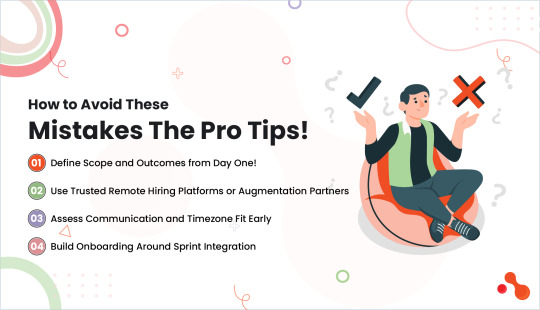
Most mistakes made when hiring remote developers can be prevented with a clear plan and structured process. Below are essential steps every founder should follow before adding a remote developer to their team.
Define Scope and Outcomes from Day One!
Start by writing down exactly what success looks like for the role. Define the project stage, current bottlenecks, expected deliverables, and timeline goals.
Avoid vague tasks like “optimize backend” or “fix speed.” Instead, set targets like “reduce API response time under 200ms” or “deliver mobile-first checkout flow by sprint two.” Clear scopes attract aligned developers and eliminate guesswork during execution.
Use Trusted Remote Hiring Platforms or Augmentation Partners
Working with a developer augmentation partner also gives you access to specialists, DevOps, and QA support when needed. Instead of relying on unverified freelance portals, choose platforms or firms that specialize in hiring remote developers for startups.
Look for services that:
Pre-vet developers with technical and communication assessments
Offer trial periods and replacement policies
Support timezone-matched hiring and sprint-ready onboarding
Assess Communication and Timezone Fit Early
A great developer who can’t collaborate is still a bad hire. During interviews, interviewers must test communication clarity and ask them how they report progress, handle blockers, or manage async workflows. Ensure at least 3–4 hours of overlap for daily collaboration.
Build Onboarding Around Sprint Integration
Onboarding should not just be about access. It must guide the developer into your workflow. Also, define how pull requests, standups, and retrospectives work. It helps new developers become productive within the first week, not the fourth.
Create simple documentation that explains:
Tools and repos
Coding guidelines
Communication preferences
Sprint cadence and planning structure
Why Acquaint Softtech Can Help You Get It Right?
When hiring remote developers, finding the right talent is only half the battle. The rest comes down to speed, communication, and fit. Founders who choose Acquaint reduce delays, avoid hiring guesswork, and scale confidently with people who know how to ship production-grade code.
At Acquaint Softtech, we simplify this process for startups by offering vetted developers who are project-ready in just 48 hours. Our team includes Laravel-certified engineers and official partners with platforms like Statamic and Bagisto, ensuring your backend performance and CMS strategy are built on strong foundations.
We focus on aligning timezone, communication, and delivery culture with your internal workflow. Every developer match includes proper onboarding support, sprint-readiness, and quality assurance coverage.
Bottomline
Too many startups sabotage their growth by rushing into hiring remote developers without structure. Founders often skip job scoping, ignore communication fit, undervalue onboarding, and cost to hire developers, instead of capability. These mistakes multiply your time and money loss in the long run!
Remote hiring can be your biggest growth enabler when done right. It offers flexibility, scalability, and access to world-class talent. But the outcome depends entirely on how you plan, vet, and integrate those developers into your workflow.
Avoid costly hiring mistakes. Start with the right remote team today!
FAQs
What is the best way to hire remote developers for startups?
The best way to hire remote developers for startups is to define your project scope, use trusted hiring platforms or augmentation partners, and assess candidates through technical tests and communication checks. Look for timezone overlap, trial periods, and sprint-readiness from day one.
How much do remote developers cost in 2025?
In 2025, the cost to hire remote developers varies by region and skill level. On average, startups pay $15–$30 per hour for mid-level developers from regions like India or Eastern Europe, while US-based developers can range between $60–$120 per hour. Always weigh cost against communication, quality, and reliability.
What are the signs of a bad remote hire?
Poor communication, missed standups, unclear updates, and lack of proactive feedback are strong signs of a bad remote hire. Others include delivery delays, ignoring coding standards, and failing to integrate into sprint cycles. If trust, output, or responsiveness drops early, consider a replacement immediately.
Should startups hire freelancers or dedicated remote developers?
Freelancers work well for quick fixes or short-term tasks. But for scalable product development, dedicated remote developers offer better reliability, onboarding, and long-term output. Startups aiming for consistent velocity and technical ownership should always choose dedicated hires over one-off freelancers.
Original Source: https://medium.com/@mukesh.ram/hiring-remote-developers-for-startups-mistakes-founders-make-in-2025-fb9609546b54
#Hiring Remote Developers#Startups#Hiring Developers#Hiring Platforms#Remote Team#Hire Remote Team#Hiring Mistakes
0 notes
Text
Who are the Rising Stars of App Development in Phoenix

Phoenix, Arizona, has emerged as a vibrant hub for innovation and technology. With a booming tech scene and a growing pool of talented developers, the city is attracting entrepreneurs and established companies alike to fuel their mobile app development endeavors. But who are the rising stars within this dynamic landscape?
While pinpointing specific individuals can be challenging, here’s how we can identify the rising stars of Phoenix App Development:
1. Tracking Award Recognition:
Several industry awards and recognition programs acknowledge exceptional app development talent. Look for Phoenix-based developers and companies consistently nominated for or winning awards like:
The Appy Awards: Recognizing excellence in mobile app development and design across various categories.
The Stevie Awards: Honoring innovation in business across numerous categories, including mobile app development.
Clutch and Good Firms Reviews: These B2B review platforms showcase top-performing service providers. Research Phoenix-based mobile app development companies with excellent client reviews and a track record of success.
2. Open Source Contributions:
Many talented developers actively contribute to open-source projects, demonstrating their expertise and passion for the craft. Look for Phoenix-based developers who are:
Regularly contributing code to prominent open-source repositories like GitHub.
Recognized as maintainers or core contributors to open-source libraries or frameworks relevant to mobile app development.
Engaging in online communities and forums, sharing knowledge and helping others within the developer ecosystem.
3. Innovation and Thought Leadership:
Rising stars often stand out by pushing boundaries and advocating for new approaches. Here are some ways to identify such developers:
Speaking at Industry Events: Keep an eye out for Phoenix-based developers presenting at app development conferences or meetups. These talks often showcase innovative solutions and a deep understanding of the industry.
Publishing Articles and Blog Posts: Developers passionate about sharing knowledge often write insightful articles or blog posts on relevant topics. Look for Phoenix-based developers contributing to reputable publications or maintaining their own tech blogs.
Active Participation in Online Communities: Engaging discussions and offering valuable insights in online forums and communities can highlight a developer’s expertise and ability to think critically.
4. Building a Strong Online Presence:
The digital age makes it easier than ever to discover rising talent. Look for individuals or companies with a strong online presence that showcases their skills and accomplishments. This includes:
Company Websites: Well-designed and informative websites that detail a company’s expertise, team members, and past projects are a good first impression.
Social Media Profiles: Active social media profiles on platforms like LinkedIn or Twitter where developers share industry news, insights, and participate in relevant conversations.
Case Studies and Client Testimonials: Companies with a strong track record often showcase successful projects and positive client testimonials on their website.
5. Focus on Skills and Experience:
Beyond the metrics mentioned above, the core of any rising star is their skillset and experience. Here are some key areas to consider:
Technical Skills: Proficiency in relevant programming languages and frameworks like Swift, Java/Kotlin, React Native, or Flutter is crucial. Expertise in specific areas like augmented reality (AR) or blockchain can be a significant plus.
UI/UX Design: Understanding how to design user-friendly and visually appealing interfaces is essential for a successful mobile app.
Problem-Solving and Critical Thinking: Mobile app development is a dynamic process. Developers should be adept at tackling challenges and finding creative solutions.
Communication and Collaboration: Clear and consistent communication with clients and team members is paramount. The ability to collaborate effectively leads to better project outcomes.
Partnering with the Phoenix App Development Stars of Tomorrow
Finding the ideal app development partner takes dedication and research. By utilizing the strategies mentioned above, you can identify rising stars in Phoenix App Development who possess the skills, experience, and passion to bring your mobile app vision to life.
Here at Net-Craft.com, a leading Phoenix App Development Services provider, we pride ourselves on being at the forefront of innovation. Our team consists of experienced and highly skilled developers who are passionate about crafting exceptional mobile apps. We combine cutting-edge technologies with a user-centric approach, ensuring your app delivers a seamless and engaging user experience.
Ready to embark on your mobile app development journey? Contact Net-Craft.com today for a free consultation. Let’s discuss your project goals and explore how we can help you turn your app idea into a reality. Together, we can leverage the talent and innovation thriving within the Phoenix App Development scene to create a groundbreaking mobile app.
If you would like to speak to a representative, please contact Net-Craft.com for a free consultation.
Content Source https://www.net-craft.com/blog/2024/04/23/rising-stars-app-development-phoenix/
3 notes
·
View notes
Text
Optimizing React Native App Performance: Advanced Techniques for a Smooth User Experience
React Native is a powerful framework that enables developers to build high-performance cross-platform mobile applications using JavaScript and React. However, just like any mobile development platform, performance optimization is crucial—especially when building enterprise-grade or user-intensive apps.
In this article, we’ll dive deep into advanced techniques for optimizing React Native apps, ensuring a seamless, smooth, and responsive user experience. Whether you’re a seasoned developer or leading a mobile team, these insights will help you fine-tune your React Native app’s performance to meet user expectations and business goals.
Why Performance Matters in React Native Apps
In today’s app-driven economy, users expect lightning-fast experiences. A sluggish or jittery app can quickly lead to user frustration and abandonment. Research shows that:
React Native, while efficient, introduces some unique performance challenges due to its JavaScript bridge and hybrid architecture. Let’s tackle these challenges head-on with proven techniques.
1. Efficient State Management: Avoid Re-renders
One of the most common reasons for laggy interfaces in React Native is unnecessary re-renders. This can occur when state updates cascade through the component tree inefficiently.
Solution:
2. Lazy Loading and Code Splitting
As your app grows, so does its initial bundle size. Loading everything at once impacts startup performance and user experience.
Solution:
3. Minimize Use of Inline Functions and Objects
Inline functions and objects in props can lead to unnecessary renders and memory bloat.
Solution:
4. Optimize List Rendering (FlatList/SectionList)
Lists are often the backbone of mobile apps. Improper configuration of lists can easily degrade performance.
Solution:
5. Optimize and Compress Images
Images often contribute to performance bottlenecks.
Solution:
6. Minimize Bridge Usage and Reduce Overhead
The communication between JavaScript and native threads (the bridge) can become a bottleneck in complex apps.
Solution:
7. Optimize Navigation Performance
Navigation lags can ruin the user experience, especially in large apps with multiple screens.
Solution:
8. Use Hermes Engine (for Android)
Hermes is an open-source JavaScript engine optimized for React Native.
Benefits:
How to enable Hermes:
In android/app/build.gradle:
9. Avoid Memory Leaks and Unused Timers
Memory leaks degrade performance over time, often going unnoticed during development.
Solution:
jsCopy
Edit
10. Profile and Benchmark Regularly
Blind optimization is wasteful. Always measure before you optimize.
Tools:
11. Use Native Modules for Heavy Lifting
When the JavaScript thread is overburdened (animations, processing, etc.), consider offloading work to native code.
Solution:
12. Enable Proguard & Release Optimizations
Don’t skip optimizing your app for production.
Steps:
Bonus: UX-Level Optimizations
Sometimes performance is about perceived smoothness:
Final Thoughts
Optimizing a React Native app isn’t about one magical setting—it’s a series of intentional, cumulative improvements. By combining effective state management, efficient rendering, memory optimizations, and native integrations, you can elevate your app to a level that feels fast, fluid, and native.
In the era of performance-sensitive users and cutthroat competition, ensuring your React Native app runs like a dream isn’t optional—it’s essential.
This content is originally posted on: https://www.vivekverma.com/ Source URL: https://www.vivekverma.com/blog/optimizing-react-native-app-performance-advanced-techniques-for-a-smooth-user-experience/
0 notes